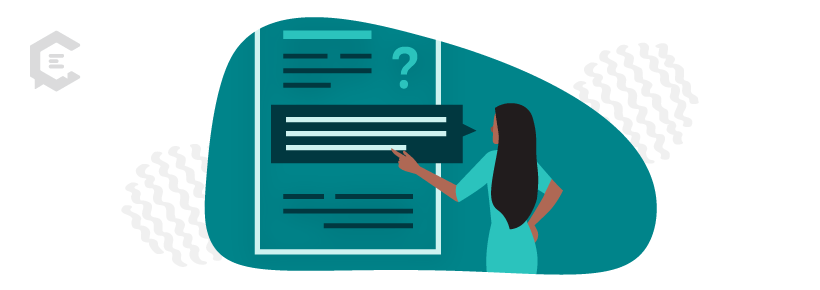At the heart of content marketing is the ability to help businesses meet their goals.
While every company will hope to gain something different through hiring a writing guru, generally speaking, they all want copy that improves fast decision-making from potential, past, and new customers.
So how do you write copy for your brand that convinces customers to take the desired action? The copywriting tips below will help you learn how to make your marketing more effective, whether you’re a business owner or a content marketer.
Know your customers and your end goal
Before we get into the copywriting tips, you’ll want to consider a few things first.
Copy can subliminally communicate more effectively when written with the desired outcome in mind, says Payge H. Kerman, the president of Wink Digital.
When working on copy to enhance fast decision-making, the focus she says the emphasis should be placed on answering these three questions:
- What is the action you’d like your customer to take?
- Where else do your customers live online? How do you match that tone?
- How do you acknowledge and resolve a customer’s pain points or desires?
6 copywriting tips that’ll inspire customers to take action
With these answers in mind, content marketing copy can connect your brand with your audience by making them feel seen and understood, but it can also help them imagine a future where their lives are made better.
“Without compelling copy driving customers to an intended behavior, your customers are given more time to second-guess their needs and purchasing decisions, and then back out,” Kerman adds.
Get the best copywriting tips below on mastering the fine art of copy that returns in dividends:
1. Only talk about one core idea at a time.
If you have several products, services, or offerings, you may want to try and sell a customer on everything. But even if there are countless benefits and features worth noting, if you try to cram them all into a paragraph, it’ll become too overwhelming for your audience, says Aleya Harris, the owner of Flourish Marketing.
Innately, she says, when we read long-winded copy, we filter out the majority of your message in an attempt to simplify our lives.
“Remember, your audience owes you nothing, especially not their attention,” she continues. “Don’t toss in other concepts that will pull your copy off track and confuse your prospects.”
2. Identify a problem to solve — and then solve it.
During the attention-grabbing phase, it’s essential to identify their needs or problems so that you can ultimately present to the public a solution to that problem, says Robert Blankenship, founder and CEO of WebFindYou.
But how do you know what they’re struggling with? The best copywriting tip you’ll get for this issue is to target your critical demographic through SEO best practices.
As an example, Blankenship says if you are producing content marketing copy for a pair of weather-resistant snow boots, it will be more effective when seen by someone living in Chicago in the dead of winter rather than someone looking for the hottest swimsuits to buy now.
Though the customer searching for the boots may know a thing or two about what they’re looking for in a pair, brands should go a step further and include educational material for the reader.
“This is where you have the chance to shine with your brand. Show your authority through knowledge on whatever particular subject your copy is about, and showcase how your brand is an ideal solution,” Blankenship recommends.
As he reminds, at this point, you might not directly be selling your product, but instead, you’re proving your credibility to your audience by showing them you’ve done your research and they can trust your brand or service.
This can be in the form of how-to blogs, 101 guides, and other captivating, informative pieces of content.
3. Practice the “call and response” method.
Another copywriting tip that’ll increase quality is to engage with your audience in a ‘call and response’ type of manner, Kerman says.
“Throughout your copy, ask your readers to engage — whether this is through thought-provoking questions or interaction-triggered events,” she continues.
In fact, she says her most successful conversion paths were organized in a “choose your own adventure” flow. “This is where the copy guides the reader’s choices and then leads directly to a conversion.
Giving the prospect the ability to engage both with the copy and the design is a recipe for success,” she shares.
One of the best executions of this method is a quiz-like format. The monthly subscription vitamin company Care/Of are masters of this since its goal is to give a personalized roadmap to health.
They take new customers through a series of questions, analyzing their lifestyle, goals, age, and other factors to recommend the best supplements. Along the way, they ask for your email, so if a customer bounces, they will be able to follow up with offers and promotions to convert them.
4. Tell a story.
Think back on the brands you’re loyal to and to the ones who have captured your attention. What did they do that was different? They told a story more likely than not, rather than focusing on the “sale, sale, sale” approach.
Most people can spot an advertisement or boring copy within a few seconds, but if they relate to something they see, they engage, says Kristan Vermeulen, the president of Knotical PR.
For instance, she says if a company is selling a CBD product, they should approach the fears of CBD by educating their audience on what it is and how it can meet their specific needs, whether it be stress, anxiety, etc.
“The story is what matters to the customer,” she continues. “Not the details of the product or the name of the product or even the price. That fast decision comes from the story.”
5. Cut through the fluff.
When you’re looking for a new recipe online, are you annoyed when you have to read a blogger’s life story before figuring out how many tablespoons of lemon juice you need?
You’re definitely not the only one since Harris says compelling content that clearly articulates how your product or service will transform your client’s life will set you apart and encourage faster decision-making.
However, if you keep up the flowery, fluffy language, they will lose interest and click off. Check out these copywriting tips and advice from Harris before choosing to hit ‘live’ on the copy:
- Each word in your marketing copy has a job to do. Are there any that are not serving a purpose?
- If it doesn’t explain how you can help your potential customers avoid pain and get more pleasure, cut it. Is your language positive and helpful?
- Be ruthless while editing to get to the core idea of your message. Are you writing to your audience and meeting their needs? Quickly get to what’s in it for them, and they will be more likely to purchase.
6. Talk like a real person.
Many newbie copywriters and entrepreneurs who moonlight as copywriters use formal language because they think it makes them sound more professional, Harris says.
However, using language that you wouldn’t naturally say aloud will make you and your brand seem distant and inauthentic. While she says you don’t need to be so casual that you are off-brand, ditch words like thus, utilize, and regards to build relationships with your leads more quickly.
And on that note, don’t rely on buzzwords because they sound trendy or cool.
Instead, be genuine and honest about the product or service you’re promoting. Instead, Blankenship says businesses should focus on creating transparent, conversational, attention-grabbing, and resonating copy that trims out the buzzwords and cliches.
“Copy that focuses on outcomes that’ll immediately solve specific pain points in your audience’s lives will dominate the copywriting and content marketing world,” he continues.
“What brands need is people sharing content in trusted contexts and within their network.”
Need help creating copy that will inspire your customers to take an action? Talk to a content specialist at ClearVoice to get compelling, high-quality copy for your brand today.






